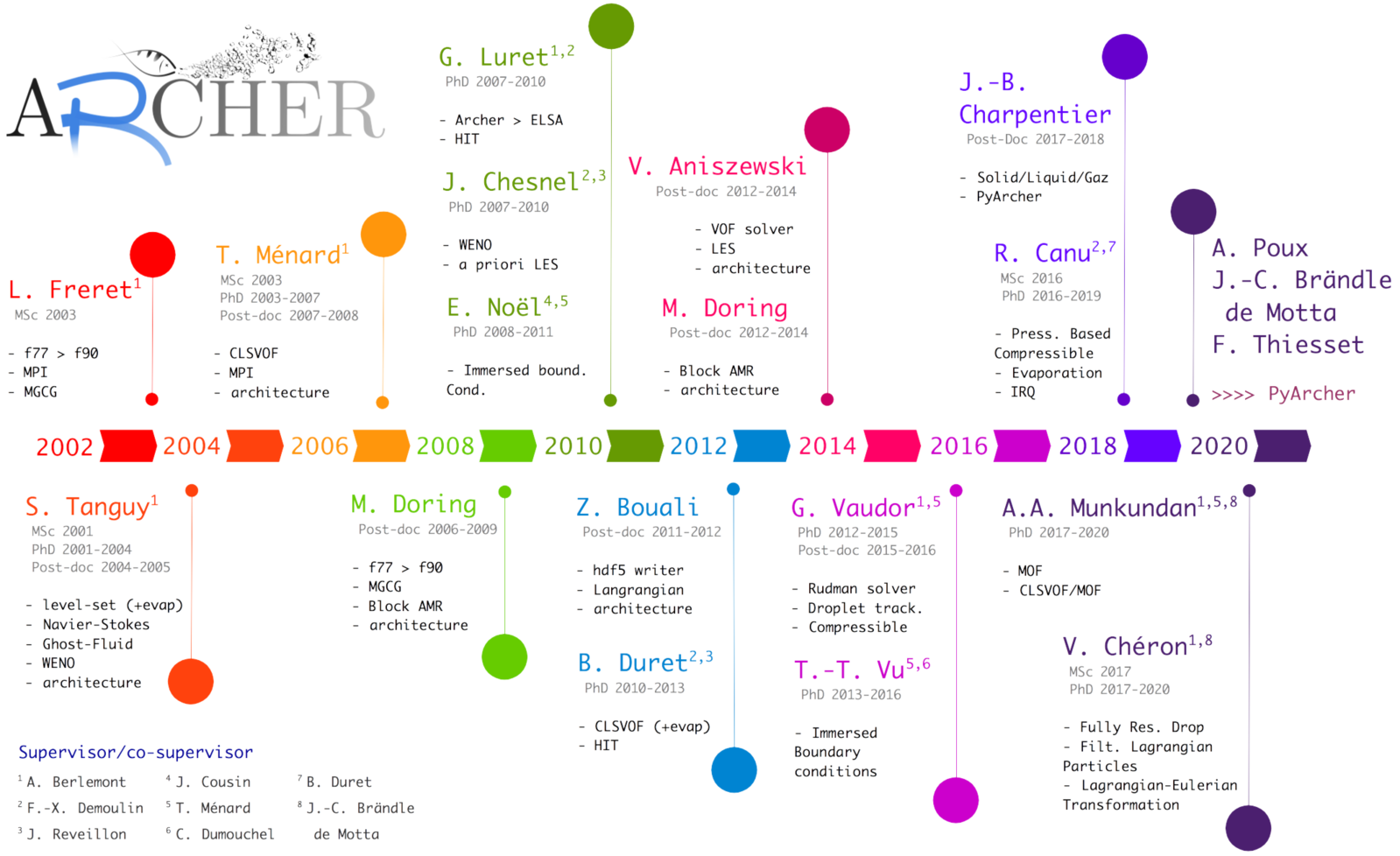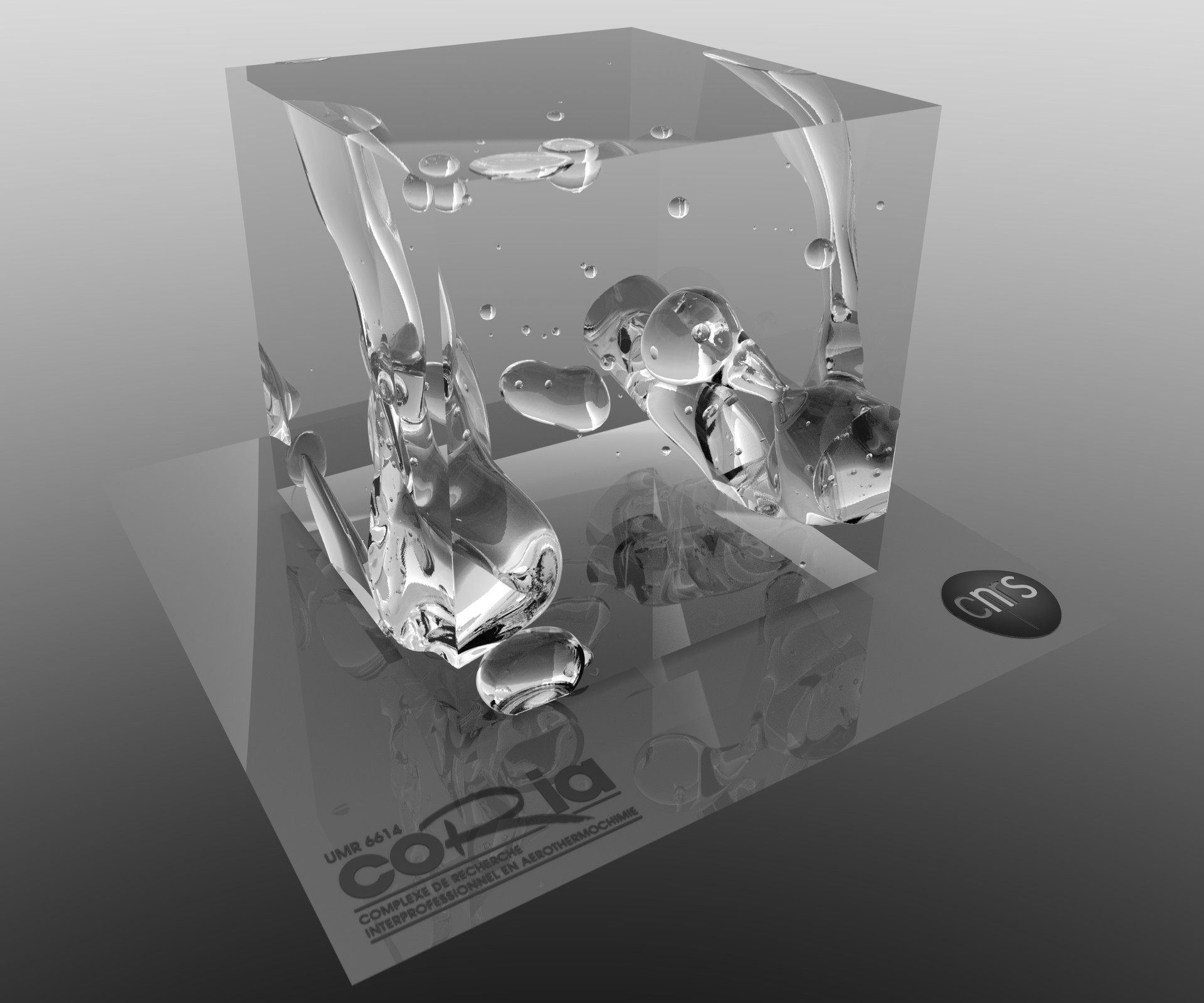Contexte
ARCHER est un code de calcul haute performance développé au laboratoire CORIA. C’est l’acronyme de Academic Research Code for Hydrodynamic Equations Resolution (Code de Recherche Fondamentale pour la Résolution des Équations de l’Hydrodynamique). Il tient aussi son nom du poisson archer qui est connu pour chasser ses proies en leur jetant un jet d’eau.
ARCHER a pour objectif de mener des Simulations Numériques Directes des écoulements diphasiques qu’ils soient turbulents, incompressibles ou compressibles, avec changement de phase, et/ou en présence de frontières solides. Les données de ces simulations servent pour l’analyse des propriétés physiques (géométriques, morphologiques, topologiques et dynamiques) de différents phénomènes tels que l’atomisation et la formation des sprays, la dispersion, l’évaporation, la séparation de phase, la captation d’aérosols. La très étroite collaboration des développeurs d’Archer avec des expérimentateurs est aussi remarquable. Ce savoir est capitalisé afin de construire ou d’améliorer des modèles physique-dépendant, notamment le modèle ELSA.
Il fut l’un des premiers codes au monde à réaliser une simulation d’atomisation d’un jet liquide dans une configuration d’injection réaliste.

Présentation
| haut |
|

Historique
 |
Le projet Archer a vu le jour en 2001 sous l'impulsion de Alain Berlemont qui a supervisé les 2 premières thèses (S. Tanguy 2001-2004, T. Ménard 2003-2007) initiant le développement du code. Depuis, 11 thèses, 7 post-doctorats et de nombreux stages master ont contribué à le faire progresser. Il constitue aujourd'hui un outil indispensable pour de nombreux chercheurs du CORIA (A. Berlemont, T. Ménard, P. Desjonqueres, J. Cousin, F-X. Demoulin, J. Reveillon, B. Duret, A. Poux, J.C.B. de Motta, F. Thiesset, C. Dumouchel) et est impliqué dans de nombreux projets financés aussi bien par des agences nationales (ANR) qu'internationales (Marie-Curie ITN). Le graphique sur la gauche retrace les étapes importantes du projet ARCHER. |
Contributeurs
|
Actuellement, les contributeurs majeurs sont :
 haut haut |


